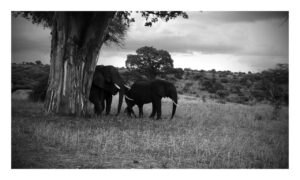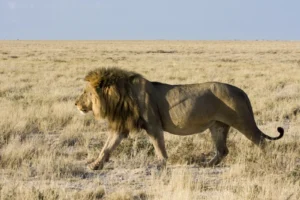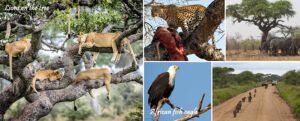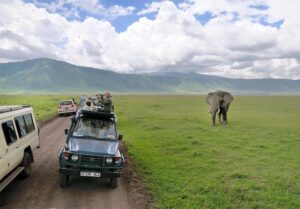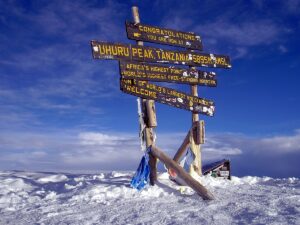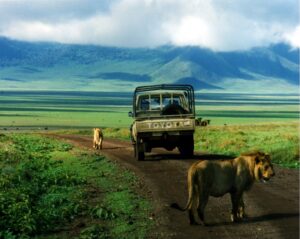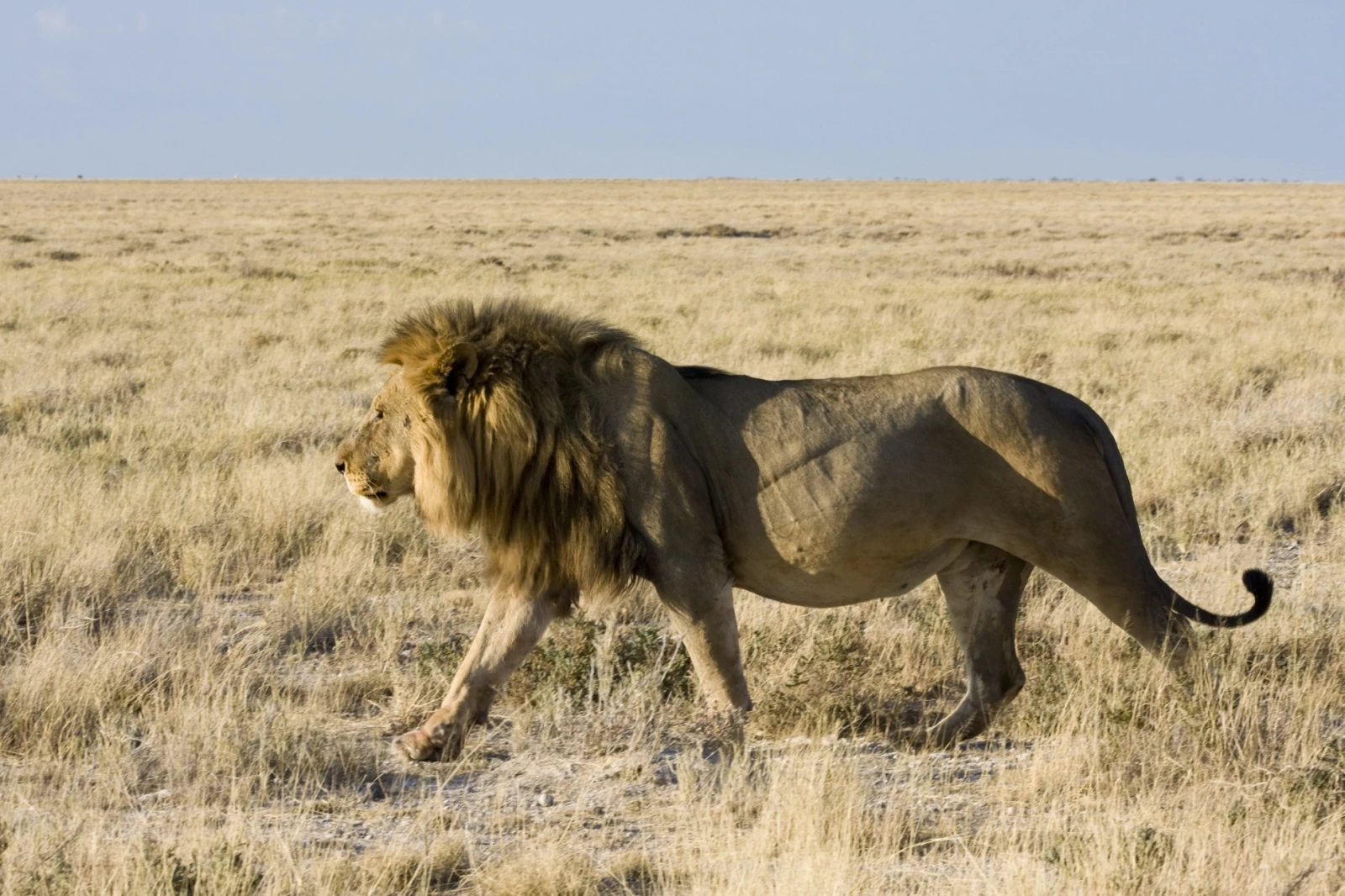
The Ultimate Guide to Serengeti Safaris: What You Need to Know
Are you dreaming of an unforgettable adventure in the heart of Africa? Look no further than the Serengeti, a world-renowned destination for wildlife enthusiasts and adventure seekers alike. This ultimate guide to Serengeti safaris will provide you with all the essential information you need to plan your trip, ensuring you have an experience of a lifetime.
What is a Serengeti Safari?
A Serengeti safari is not just a trip; it’s an immersive experience into one of the most iconic ecosystems on the planet. The Serengeti National Park, located in Tanzania, is famous for its vast savannahs, diverse wildlife, and the Great Migration, where millions of wildebeest and zebras traverse the plains in search of fresh grazing grounds.
Why Choose a Serengeti Safari?
-
- Unparalleled Wildlife Viewing: The Serengeti is home to the “Big Five” (lion, leopard, elephant, buffalo, and rhinoceros), along with countless other species, including cheetahs, giraffes, and hippos. A Serengeti safari offers the chance to see these magnificent animals in their natural habitat.
-
- The Great Migration: One of nature’s most spectacular events, the Great Migration occurs annually between July and October. Witnessing this phenomenon is a bucket-list experience for many travelers.
-
- Stunning Landscapes: From the endless plains to the riverine forests, the Serengeti offers breathtaking scenery that changes with the seasons. Each landscape provides unique opportunities for wildlife encounters and photography.
-
- Cultural Encounters: Engage with the local Maasai communities and learn about their traditions and way of life. Many safari operators offer cultural experiences that allow you to connect with the people of the region.
Best Time to Go on a Serengeti Safari
The best time for a Serengeti safari largely depends on what you want to see:
-
- January to March: This is the calving season for wildebeest, and you can witness newborns taking their first steps. The weather is generally warm and dry.
-
- April to June: These months are characterized by the rainy season, which can lead to lush landscapes. However, wildlife viewing can be challenging due to the thick vegetation.
-
- July to October: This is peak safari season, coinciding with the Great Migration. Expect large herds of wildebeest and zebras crossing rivers, attracting predators like crocodiles and lions.
-
- November to December: The short rains begin, and the landscape becomes vibrant again. This is also a good time to see migratory birds.
How to Choose the Right Safari Experience
When planning your Serengeti safari, consider the following options:
-
- Game Drives: The most popular way to explore the Serengeti. Choose between half-day, full-day, or multi-day drives, often led by experienced guides.
-
- Walking Safaris: For a more intimate experience, consider a walking safari, where you can learn about the ecosystem up close.
-
- Hot Air Balloon Safaris: Experience the Serengeti from above. A hot air balloon ride at dawn offers breathtaking views and a unique perspective of the landscape.
-
- Luxury Lodges and Camps: Choose from a range of accommodations, from luxury lodges to tented camps, each offering different levels of comfort and experiences.
-
- Budget Safaris: For those traveling on a budget, there are group tours and camping options that provide a more affordable way to experience the Serengeti.
What to Pack for Your Serengeti Safari
Packing for a Serengeti safari requires careful consideration. Here’s a checklist to ensure you have everything you need:
-
- Clothing: Lightweight, breathable clothing in neutral colors (avoid bright colors). Long sleeves and pants for protection against sun and insects.
-
- Footwear: Comfortable walking shoes or hiking boots.
-
- Binoculars: Essential for wildlife viewing.
-
- Camera: Capture the stunning landscapes and wildlife.
-
- Sunscreen and Insect Repellent: Protect yourself from the sun and bugs.
-
- Reusable Water Bottle: Stay hydrated while being eco-friendly.
Tips for an Unforgettable Serengeti Safari
-
- Hire a Knowledgeable Guide: A good guide can enhance your experience by providing insights into the wildlife and ecosystem.
-
- Be Patient: Wildlife viewing can require patience. Stay quiet and observant, and you may be rewarded with incredible sightings.
-
- Respect Nature: Follow park rules and guidelines to protect the wildlife and their habitats.
-
- Stay Flexible: Wildlife is unpredictable. Be open to changing your plans based on animal movements and weather conditions.
-
- Plan Ahead: Book your safari well in advance, especially during peak seasons, to secure your preferred accommodations and experiences.
Conclusion
A Serengeti safari is more than just a vacation; it’s a life-changing experience that connects you with nature and the incredible wildlife that inhabits this stunning region. By using this ultimate guide, you can ensure that your trip to the Serengeti is well-planned and unforgettable. Whether you’re witnessing the Great Migration or enjoying a peaceful sunset over the savannah, the memories from your Serengeti safari will last a lifetime. Start planning your adventure today!
Lets Plan your safari
What is the best time of year to go on a Serengeti safari?
The best time of year to go on a Serengeti safari largely depends on what you want to see. Here’s a breakdown:
1. January to March
Calving Season: This is when wildebeest give birth, and you can witness newborns taking their first steps.
Weather: Warm and dry, making it a great time for wildlife viewing.
2. April to June
Rainy Season: This period sees lush landscapes, but wildlife viewing can be challenging due to thick vegetation.
Bird Watching: Great for seeing migratory birds as they return.
3. July to October
Peak Safari Season: Coincides with the Great Migration, where large herds of wildebeest and zebras cross rivers.
Best Wildlife Viewing: This is the most popular time for safaris due to the abundance of wildlife and dramatic river crossings.
4. November to December
Short Rains: The landscape becomes vibrant again, and you can see migratory birds.
Less Crowded: This is a good time for fewer tourists and still good wildlife viewing.
Conclusion
For the ultimate experience, July to October is considered the best time for a Serengeti safari, especially if you want to witness the Great Migration. However, each season offers unique opportunities, so choose based on your interests!
Lets Plan your safari
What are some of the unique experiences one can have during the wildebeest migration in the Serengeti?
1. River Crossings
Dramatic Scenes: Witnessing thousands of wildebeest and zebras bravely crossing rivers, often facing crocodiles, is one of the most thrilling spectacles of the migration.
Photography Opportunities: Capture breathtaking moments as animals navigate the treacherous waters.
2. Calving Season
Newborns: From January to March, observe wildebeest calves taking their first steps. This is a time of high predator activity, as lions and hyenas are drawn to the vulnerable young.
Intimate Wildlife Encounters: Experience the rawness of nature as you watch mothers care for their young.
3. Predator Interactions
Big Five Sightings: The migration attracts not only herbivores but also predators like lions, cheetahs, and leopards. Witnessing predator-prey interactions is a highlight for many safari-goers.
Tracking Predators: Guided safaris often focus on tracking these predators during the migration, providing insights into their hunting strategies.
4. Hot Air Balloon Safaris
Aerial Views: Experience the migration from above in a hot air balloon, offering a unique perspective of the vast herds and stunning landscapes.
Sunrise Experience: Enjoy a breathtaking sunrise over the Serengeti, followed by a champagne breakfast upon landing.
5. Cultural Encounters
Maasai Communities: Engage with the local Maasai people, who share their traditions and lifestyle in harmony with the migration.
Cultural Tours: Some safari operators offer cultural experiences that include visits to Maasai villages, enhancing your understanding of the region.
6. Walking Safaris
Close Encounters: Experience the migration on foot, guided by expert rangers. This allows for a deeper connection with the environment and a chance to learn about smaller wildlife and plants.
Learning Experience: Gain insights into tracking animals and understanding their behaviors in their natural habitat.
7. Night Safaris
Different Wildlife: Explore the Serengeti at night to see nocturnal species and experience the sounds of the African wilderness.
Stargazing: The clear skies provide an incredible view of the stars, adding a magical touch to your safari experience.
8. Photography Safaris
Expert Guidance: Many operators offer specialized photography safaris, where professional photographers provide tips and guidance on capturing the migration.
Unique Perspectives: Focus on composition and lighting to create stunning wildlife images.
Conclusion
The wildebeest migration in the Serengeti is not just about observing animals; it’s about immersing yourself in one of nature’s most incredible spectacles. Each experience offers something unique, making your safari unforgettable.
Lets Plan your safari
What other large herbivores can be seen in the Serengeti alongside the wildebeest migration?
In addition to the wildebeest, the Serengeti is home to several other large herbivores that can be observed alongside the migration. Here are some notable species:
1. Zebras
- Co-Migrants: Often seen migrating with wildebeests, zebras add to the spectacle with their striking black-and-white stripes.
- Social Behavior: Their interactions and herd dynamics provide interesting observations during the migration.
2. African Elephants
- Majestic Giants: Large herds of elephants roam the Serengeti, often seen foraging for food or interacting with other wildlife.
- Impact on Ecosystem: Their feeding habits help shape the landscape, creating habitats for other species.
3. Buffalo
- Part of the Big Five: African buffalo are commonly found grazing in the same areas as the migrating herds, often in large, protective herds.
- Predator Interactions: Their presence can attract predators, creating dynamic wildlife interactions.
4. Giraffes
- Tall Browsers: Giraffes can be seen feeding on acacia trees, providing a unique visual contrast to the plains.
- Social Structures: Observing their social interactions and movements adds richness to the safari experience.
5. Common Eland
- Largest Antelope: Elands are often seen grazing in the open plains and are known for their impressive size and spiral horns.
- Behavior: Their calm demeanor and herd behavior make them interesting to observe.
6. Thomson’s Gazelle
- Agile Antelope: These small, agile antelopes are often found in large groups, quickly fleeing from predators.
- Coexistence: They share the plains with the migrating wildebeest, taking advantage of the same grazing areas.
7. Grant’s Gazelle
- Larger Relative: Similar to Thomson’s gazelles but larger, Grant’s gazelles are also part of the diverse herbivore population in the Serengeti.
- Grazing Patterns: They often graze alongside other species, including wildebeests and zebras.
8. Topi
- Distinctive Appearance: Topi are medium-sized antelopes recognized by their unique coloration and curved horns.
- Habitat Preferences: Often found in open grasslands, they can be seen in the same areas as the migrating herds.
9. Hartebeest
- Adaptable Grazers: These antelopes are well adapted to the savannah and can often be seen in herds, particularly during the migration season.
- Unique Shape: Their elongated faces and distinctive body shape make them easily recognizable.
Conclusion
The Serengeti’s diverse ecosystem supports a variety of large herbivores that coexist with the wildebeest migration. From zebras and elephants to various antelope species, each contributes to the rich tapestry of wildlife, making every safari an exciting adventure filled with unique observations.
Lets Plan your safari
What other types of migratory animals can be found in the Serengeti ecosystem besides wildebeests and zebras?
In addition to wildebeests and zebras, the Serengeti ecosystem hosts a variety of other migratory animals. Here are some notable examples:
1. Thomson’s Gazelle
- Seasonal Movement: These small antelopes often migrate in response to the availability of grazing, following the herds of wildebeests and zebras.
- Agility: Known for their speed and agility, they can quickly evade predators.
2. Grant’s Gazelle
- Similar to Thomson’s: These larger gazelles also participate in seasonal migrations, often seen alongside other herbivores.
- Grazing Behavior: They adapt their movements based on the availability of grass.
3. Topi
- Open Grassland Habitat: Topi migrate to find suitable grazing areas, often moving in herds during the wet and dry seasons.
- Distinctive Appearance: Their unique coloration and body shape make them easily recognizable.
4. Hartebeest
- Grazing Patterns: These antelopes migrate to find fresh pastures, often following the same routes as the larger herds.
- Social Structure: They are typically found in mixed herds with other antelope species.
5. African Elephants
- Seasonal Movements: While not migratory in the traditional sense, elephants often move across large areas in search of food and water, especially during dry seasons.
- Impact on Ecosystem: Their movements can influence the distribution of other wildlife.
6. Birds
- Migratory Birds: The Serengeti attracts numerous migratory bird species, particularly during the wet season. Notable examples include:
- Storks: Various species of storks migrate to the region for breeding.
- Raptors: Birds of prey, such as eagles and vultures, also migrate to take advantage of the abundant food supply during the migration of herbivores.
7. Wildebeest Calves
- Seasonal Births: While wildebeests are the primary migrants, their calves are born during the calving season (January to March), leading to a surge in movement as they join the herds.
8. Various Insect Species
- Termites and Other Insects: While not traditionally considered migratory, certain insect species, like termites, can exhibit seasonal movements in response to environmental conditions.
Conclusion
The Serengeti ecosystem is rich in biodiversity, and while wildebeests and zebras are the most famous migratory animals, many other species, including various antelopes, elephants, and birds, also participate in seasonal movements. This interconnected web of life enhances the ecological dynamics of the region, making it a fascinating destination for wildlife enthusiasts.
Lets Plan your safari
What are the most popular safari activities and experiences in the Serengeti?
The Serengeti offers a wide range of exciting safari activities and experiences that cater to different interests. Here are some of the most popular:
1. Game Drives
- Description: Guided tours in 4×4 vehicles allow you to explore the park and observe wildlife in their natural habitat. Morning and evening drives are particularly rewarding.
2. Hot Air Balloon Safaris
- Description: Experience the Serengeti from above at sunrise. After an exhilarating flight, enjoy a champagne breakfast in the wilderness.
3. Walking Safaris
- Description: Accompanied by a knowledgeable guide, these safaris offer a close-up experience with nature, allowing you to learn about tracks, plants, and smaller wildlife.
4. Bird Watching
- Description: The Serengeti is home to over 500 bird species. Birdwatching tours focus on spotting both resident and migratory birds, making it a paradise for avian enthusiasts.
5. Cultural Tours
- Description: Engage with local Maasai communities to learn about their traditions, customs, and way of life. These experiences often include visits to villages and cultural performances.
6. Night Safaris
- Description: Experience the Serengeti after dark. Night drives reveal nocturnal wildlife and provide a different perspective on the ecosystem.
7. Photography Safaris
- Description: Tailored for photography enthusiasts, these safaris focus on capturing stunning images of wildlife and landscapes, often with expert guides who know the best spots.
8. The Great Migration
- Description: Witness one of nature’s most spectacular events as millions of wildebeest and zebras migrate across the plains. Timing your visit to coincide with this event can be a highlight of any safari.
9. Camping Safaris
- Description: For a more immersive experience, consider a mobile camping safari. This allows you to stay in the heart of the wilderness, enjoying the sounds of nature at night.
10. Fishing
- Description: Some areas of the Serengeti offer fishing opportunities, allowing visitors to catch local fish species in rivers and lakes.
These activities not only enhance your experience but also provide unique perspectives on the Serengeti’s incredible wildlife and landscapes.
Lets Plan your safari
What other activities or experiences are available in the Serengeti beyond game drives?
In addition to game drives, the Serengeti offers a variety of activities and experiences that enrich your safari adventure. Here are some notable options:
1. Hot Air Balloon Safaris
- Experience breathtaking views of the Serengeti at sunrise from a hot air balloon, followed by a celebratory breakfast in the wilderness.
2. Walking Safaris
- Guided walks allow you to explore the park on foot, offering insights into the ecosystem, animal tracks, and plant life.
3. Cultural Experiences
- Engage with local communities, such as the Maasai, to learn about their traditions, crafts, and daily life through village visits and cultural performances.
4. Bird Watching
- With over 500 bird species, birdwatching tours provide opportunities to spot both resident and migratory birds in their natural habitats.
5. Photography Safaris
- Tailored for photography enthusiasts, these safaris focus on capturing stunning wildlife and landscapes, often with expert guides.
6. Night Safaris
- Experience the Serengeti after dark on guided night drives, where you can see nocturnal wildlife and enjoy a unique perspective of the park.
7. Camping Safaris
- Mobile camping safaris let you stay in the heart of the wilderness, providing an immersive experience under the stars.
8. Fishing
- Some areas of the Serengeti offer fishing opportunities in rivers and lakes, allowing you to catch local fish species.
9. Visit to Olduvai Gorge
- Explore this archaeological site, known as the “Cradle of Mankind,” where early human fossils were discovered.
10. Scenic Flights
- Take a scenic flight over the Serengeti for a bird’s-eye view of the stunning landscapes and wildlife.
11. Horseback Safaris
- Experience the Serengeti on horseback, providing a unique vantage point and a chance to get closer to wildlife.
12. Stargazing
- Enjoy the clear night skies of the Serengeti, perfect for stargazing and appreciating the beauty of the cosmos.
These activities offer diverse ways to connect with the Serengeti’s natural beauty and cultural richness, making your safari experience truly unforgettable.
Lets Plan your safari
What are some unique accommodation options available in the Serengeti?
Lets Plan your safari
What to Pack for Your Serengeti Safari
Here’s a complete checklist of what to pack for your Serengeti safari to ensure you have everything you need for an enjoyable experience:
Clothing
- Lightweight, Breathable Clothing: Neutral colors (khaki, beige, olive) to blend in with the environment.
- Long-Sleeved Shirts: For sun protection and to keep mosquitoes at bay.
- Convertible Pants: Zip-off pants are versatile for changing temperatures.
- Shorts: Comfortable for warmer days.
- Warm Layers: Fleece or a light jacket for cooler mornings and evenings.
- Hat: A wide-brimmed hat for sun protection.
- Comfortable Walking Shoes: Sturdy, closed-toe shoes for game drives and walking safaris.
- Sandals/Flip-Flops: For relaxing at your accommodation.
Accessories
- Sunglasses: UV protection for your eyes.
- Binoculars: Essential for wildlife viewing.
- Camera: With extra batteries and memory cards for capturing memories.
- Daypack: For carrying essentials during excursions.
- Reusable Water Bottle: Stay hydrated while being eco-friendly.
Toiletries
- Sunscreen: High SPF to protect against sunburn.
- Insect Repellent: To ward off mosquitoes and other insects.
- Personal Hygiene Products: Travel-sized toiletries, including hand sanitizer.
- Medications: Any personal medications, plus a basic first-aid kit.
Travel Documents
- Passport: Ensure it’s valid for at least six months.
- Visa: Check if you need a visa for Tanzania.
- Travel Insurance: Important for emergencies.
- Itinerary and Reservation Confirmations: Keep copies handy.
Miscellaneous
- Snacks: Energy bars or trail mix for long days.
- Power Adapter: For charging devices (Tanzania uses type D and G plugs).
- Travel Pillow: For comfort during travel.
- Guidebook or Map: For additional information about the region.
Optional Items
- Notebook and Pen: For journaling your experiences.
- Lightweight Binoculars: For better wildlife viewing.
- Swimwear: If your accommodation has a pool.
This checklist will help ensure you’re well-prepared for your adventure in the Serengeti, allowing you to focus on enjoying the incredible wildlife and landscapes.
Lets Plan your safari
Can I combine a Serengeti safari with other destinations?
Yes, you can definitely combine a Serengeti safari with other destinations to enhance your travel experience. Here are some popular options:
1. Ngorongoro Crater
- Just a few hours from the Serengeti, this UNESCO World Heritage Site is known for its stunning landscapes and rich wildlife, including the Big Five.
2. Lake Manyara National Park
- Famous for its tree-climbing lions and diverse birdlife, Lake Manyara is a great stop before or after your Serengeti adventure.
3. Tarangire National Park
- Known for its large elephant herds and iconic baobab trees, Tarangire offers a different landscape and wildlife experience.
4. Zanzibar
- After your safari, consider relaxing on the beautiful beaches of Zanzibar. It’s a short flight from the mainland and offers a mix of culture and relaxation.
5. Arusha
- Many safaris start or end in Arusha, where you can explore local markets, visit cultural heritage sites, or enjoy a day trip to nearby parks.
6. Selous Game Reserve
- Located further south, Selous offers a more remote safari experience with opportunities for walking safaris and boat safaris.
7. Mikumi National Park
- This park is accessible from Dar es Salaam and can be combined with a Serengeti safari for a diverse wildlife experience.
Combining these destinations allows you to experience a variety of landscapes, cultures, and wildlife, making your trip even more memorable.
Lets Plan your safari
How long should I plan for a Serengeti safari?
The ideal duration for a Serengeti safari typically ranges from 3 to 7 days, depending on your preferences and travel goals. Here’s a breakdown to help you decide:
3 Days
- Overview: A short trip focusing on key wildlife sightings.
- Activities: Morning and evening game drives.
- Ideal For: Travelers with limited time or those looking to combine with other destinations.
4 to 5 Days
- Overview: A balanced itinerary that allows for more exploration.
- Activities: Multiple game drives, potential for a hot air balloon ride, and visits to different areas of the park.
- Ideal For: First-time visitors wanting a comprehensive experience.
6 to 7 Days
- Overview: An immersive safari experience.
- Activities: Extensive game drives, cultural visits to local communities, and possibly a combination with nearby parks like Ngorongoro Crater.
- Ideal For: Wildlife enthusiasts and those wanting to relax and enjoy the scenery without feeling rushed.
Additional Considerations
- Travel Time: Factor in travel time to and from the Serengeti, especially if you’re coming from other destinations.
- Wildlife Migration: If you want to witness the Great Migration, plan your trip during the peak months for the best experience.
Ultimately, the length of your safari should align with your interests, budget, and available time.
Lets Plan your safari
Are Serengeti safaris family-friendly?
Yes, Serengeti safaris can be very family-friendly! Here are some reasons why:
1. Accommodations
- Many lodges and tented camps offer family-friendly options, including family suites or interconnected rooms, ensuring comfort for all ages.
2. Guided Tours
- Family-oriented tour operators provide knowledgeable guides who can tailor the experience to be engaging for children, making learning about wildlife fun.
3. Activities
- Some lodges offer activities specifically designed for kids, such as nature walks, educational programs, and cultural interactions with local communities.
4. Safety Measures
- Reputable safari companies prioritize safety, ensuring that all activities are suitable for families. Kids are often required to be a certain age for walking safaris or other specific activities.
5. Wildlife Education
- Safaris provide a unique opportunity for children to learn about wildlife conservation and the importance of protecting natural habitats.
6. Flexibility in Itineraries
- Family itineraries can be customized to include shorter game drives or more frequent breaks to accommodate younger travelers.
7. Cultural Experiences
- Interactions with local tribes, such as the Maasai, can be educational and fascinating for children, giving them a broader understanding of different cultures.
Tips for a Family Safari
- Plan Ahead: Ensure that the accommodations and activities are suitable for your children’s ages.
- Pack Wisely: Bring along essentials like snacks, games, and comfort items to keep kids entertained during travel times.
- Stay Hydrated and Sun-Protected: Keep children hydrated and protected from the sun with hats and sunscreen.
Overall, with the right planning, a Serengeti safari can be a memorable and enriching experience for the whole family!

